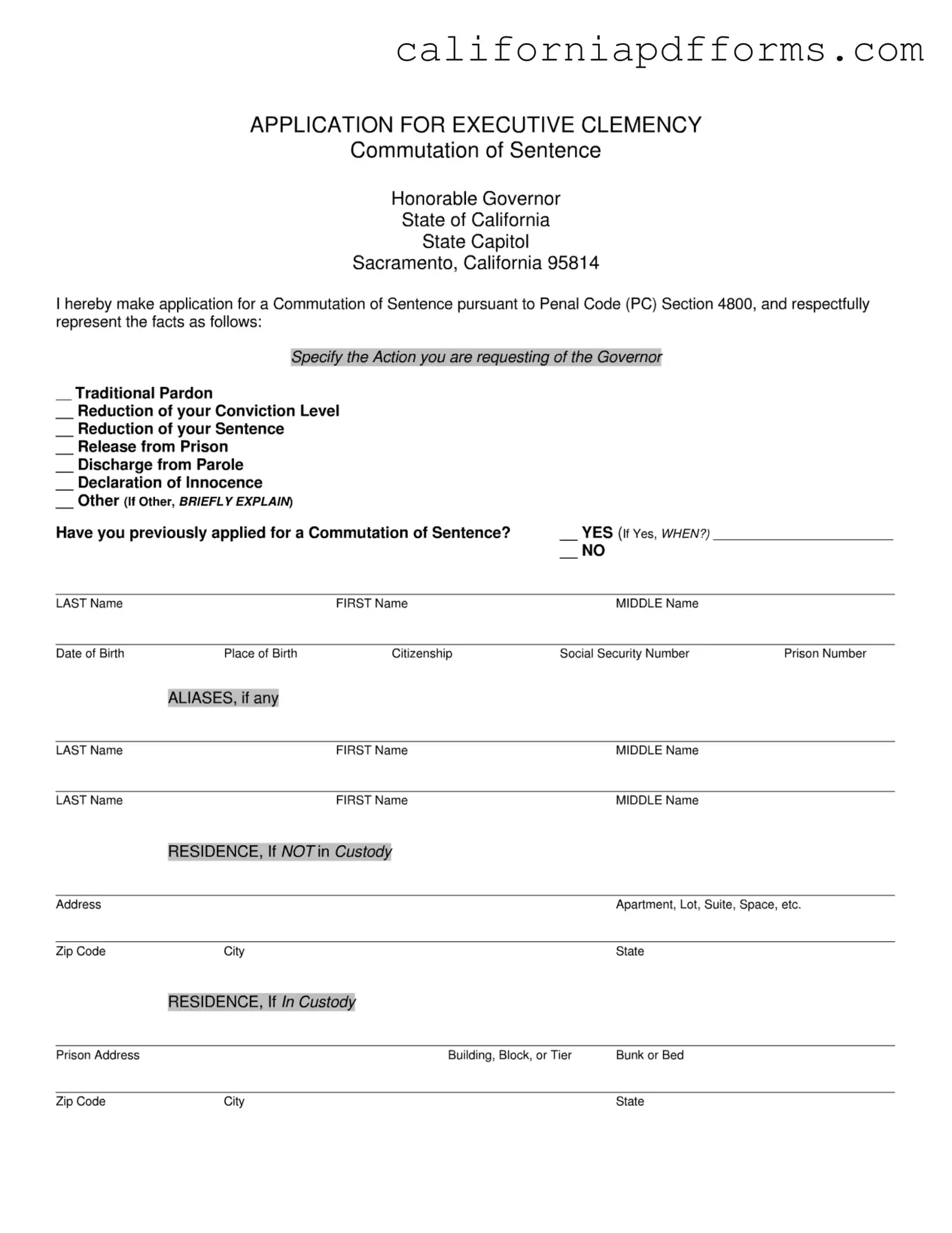The California Executive Clemency form is used to request a commutation of sentence from the Governor. This can include various actions such as a traditional pardon, reduction of conviction level, reduction of sentence, release from prison, discharge from parole, or a declaration of innocence.
Who is eligible to apply for executive clemency?
Individuals who have been convicted of a felony in California may apply for executive clemency. Eligibility may depend on factors such as the nature of the offense, time served, and rehabilitation efforts. Each case is evaluated on its own merits.
Complete the form by providing personal details such as your name, date of birth, and social security number. Include information about your conviction, plea, and any prior applications for clemency. Be thorough and honest in your responses. If additional space is needed, use extra paper as necessary.
You need to provide details about the arresting agency, trial type, commitment offense, sentencing date, and names of your defense and prosecuting attorneys. Additionally, include your plea and any appeal information if applicable.
What should I include in my personal statement?
Your personal statement should cover the circumstances of your offense, rehabilitation efforts during incarceration, and your prison record, including any commendations or disciplinary actions. Clearly explain why your request for clemency should be granted.
Is there a fee associated with the application?
No, there is no fee required to submit the California Executive Clemency form. However, you may incur costs if you choose to hire an attorney or need to obtain supporting documents.
What happens after I submit my application?
After submission, your application will be reviewed by the Governor's office. They may contact you for additional information or clarification. A notice of intention to apply must also be sent to the District Attorneys in each county where you were convicted.
Can I seek assistance with my application?
Yes, you may seek assistance from legal professionals or organizations that specialize in clemency applications. If someone assists you and receives compensation, you must disclose this in your application.
